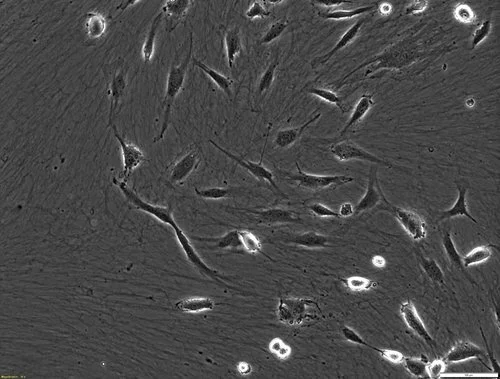CELLvo™ Technology: a Groundbreaking Tool in Endothelial Progenitor Cell Research
The concept of angiogenesis as a means of regenerative medicine has intrigued and inspired scientists and medical professionals for many years. Ernest McCulloch and James Till’s pioneering research in the early 1960s shined a spotlight on the enormous potential of cell-based therapies for regenerative medicine, paving the way for meaningful advancements in the field.
EPCs: the future of angiogenesis
In 2004, Mervin Yoder provided another significant contribution to the specialty with his description of endothelial progenitor cells (EPCs). These cells, found predominantly in human umbilical cord blood (and, to a lesser extent, peripheral blood in adult humans), are less mature than cells from the umbilical vein (hUVECs); they offer a much greater capacity for proliferation and colony forming than other endothelial cell types, both in vitro as well as in vivo.
As a result, human cord blood EPCs (hCB-EPCs) are ideal for forming perfusable blood vessels; in numerous in vivo studies, they have demonstrated promising results in the treatment of cardiovascular disease and ischemia. What’s more, hCB-EPCs are also thought to be progenitors of other types of endothelial cells, according to research published in the International Journal of Cardiology in 2015.
The problem - and the solution
Unfortunately, the rarity of these types of cells and the difficulty in successfully isolating them from human tissue has, until now, hindered the progress of EPC in both research and practical application.
StemBioSys offers a practical and affordable solution to the issue. We are the only provider of primary EPCs, and our unique CELLvo™ Matrix Technology delivers a much easier method of isolating them for use in angiogenesis and vascularization.
To test the finding that hCB-EPCs are more successful than hUVECs in angiogenesis and vessel formation capacity, we conducted a study using both isolated CELLvo™ hCB-EPCs and hUVECs purchased from a manufacturer. Both types of cells had been cryogenically frozen, and were thawed and expanded on StemBioSys’ CELLvo™ Matrix plates.
We compared CELLvo™ hCB-EPCs and hUVECs according to the following parameters:
Phenotype. Our study results indicated that CELLvo™ hCB-EPCs are similar to hUVECs in that they display the classic endothelial cell phenotype with regard to size, surface markers and cobblestone morphology within their colonies.
Proliferation and clonal expansion. Our study confirmed reports indicating the higher proliferative potential of EPCs when compared to hUVECs and more mature cell types. While both CELLvo™ hCB-EPCs and commercially available hUVECs were successful in producing primary colonies, the CELLvo™ hCB-EPCs were larger and more numerous. In addition, CELLvo™ hCB-EPCs displayed a much greater capacity for forming both secondary and tertiary colonies than hUVECs.
Vessel formation and angiogenic paracrine profile. Our studies concluded that CELLvo™ hCB-EPCs were roughly 25% more angiogenic than hUVECs. Furthermore, CELLvo™ hCB-EPCs were shown to secrete higher levels of proangiogenic cytokines (which may induce capillary formation).
By making hCB-EPCs more readily available to researchers and those in the medical field, StemBioSys® is helping to remove the barriers to better understanding angiogenesis and developing potential therapies for the treatment of ischemic tissues.

